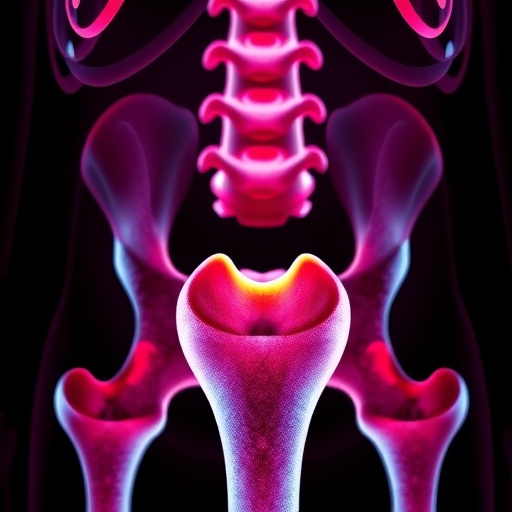Colorectal cancer is the second deadliest cancer in the United States, and just six out of 10 adults in the age range recommended for routine screening–50 to 75–reported having it done in 2015. When patients do not keep up with screening, the risk of death is substantially higher, so Penn Medicine researchers, investigating a new way to boost screening among those who were overdue, found a high number of patients completed at-home screening tests when they were mailed directly to them, regardless of whether they were provided a financial incentive. The results of the study are detailed in a paper published today in JAMA Network Open.
The researchers found that roughly 24 percent of patients mailed back completed kits within two months of receiving them, and 29 percent did so within six months.
“This is a relatively high response rate for screening since we only reached out to patients who had not been previously up-to-date, despite having a primary care clinician,” said lead author Shivan Mehta, MD, MBA, associate chief innovation officer at Penn Medicine and an assistant professor of Medicine at the Perelman School of Medicine at the University of Pennsylvania.
Traditionally, colonoscopies have almost exclusively been offered by some doctors as a screening tool for colorectal cancer. But Mehta and his collaborators, who study behavioral economics–a concept that takes people’s psychology and decision-making tendencies into account to improve health behavior–thought simpler methods might increase low rates of screening, as a complement to colonoscopies. As such, use of fecal immunochemical test (FIT) kits, which can be completed by the patient at home, was explored.
“We believe that mailing kits directly to patients, which frames participation as the default, reduced steps in the screening process, making it easier for patients to get screened and catch colorectal cancer earlier or even potentially prevent it from occurring,” said the study’s senior author, Chyke Doubeni, MD, MPH, also a Penn Medicine professor.
Nearly 900 patients between the ages of 50 and 75 were selected for the study through the electronic health record from December 2015 to July 2017 using an automated algorithm. All of the patients identified were overdue for colorectal cancer screening, meaning they hadn’t had a colonoscopy in 10 years, a flexible sigmoidoscopy in five years, or stool testing in the last year. Every patient was mailed a FIT kit from their primary care provider, and encouraged to complete the test and send it back within two months.
Four different groups were randomly assigned as part of the study. The control group received only the kit, while each of the others had a different financial incentive. One group received a kit and a $10 gift card to a national pharmacy store that was provided regardless of participation. In another group, patients received a FIT kit and the promise of a $10 gift card to the pharmacy if they mailed the completed kit back. The last group were informed that they would be entered into a lottery with a one in 10 chance of winning $100 in cash if they returned the completed kit.
Each of these incentives have an expected value of $10, but none performed statistically significantly better than the control group. Other studies in behavioral economics have shown that people may respond at a higher rate to larger incentives or lotteries: for instance, one involving Mehta that offered patients $100 to get a colonoscopy, and another that showed higher completion rates when a lottery incentive offered. But the financial incentives did not work this time.
“This newest study highlights that framing and context of incentives can be just as important as the dollar value of incentives, which is consistent with the principles of behavioral economics,” Mehta said.
More studies investigating how these principles might affect colorectal cancer screening rates are ongoing. One is looking into the way clinicians offer the choice of colonoscopy and stool testing, since most outreach only focuses on one or the other. Researchers are also looking into how text messaging and online patient portals can be used to more efficiently communicate with patients about testing. Dr. Mehta also received a grant from the National Cancer Institute to support a program that applies behavioral economics to population-based colorectal cancer screening (K08CA234326).
###
This research was funded by a Health Research Formula Grant through the Abramson Cancer Center at the University of Pennsylvania from the Commonwealth of Pennsylvania, and partly by grants received from the National Cancer Center Institute of the National Institutes of Health (K08CA234326, R01CA213645).
Other Penn co-authors include Rebecca Pepe, Nicole Gabler, Mounika Kanneganti, Catherine Reitz, Chelsea Saia, Joseph Teel, David A. Asch, and Kevin G. Volpp.
Penn Medicine is one of the world’s leading academic medical centers, dedicated to the related missions of medical education, biomedical research, and excellence in patient care. Penn Medicine consists of the Raymond and Ruth Perelman School of Medicine at the University of Pennsylvania (founded in 1765 as the nation’s first medical school) and the University of Pennsylvania Health System, which together form a $7.8 billion enterprise.
The Perelman School of Medicine has been ranked among the top medical schools in the United States for more than 20 years, according to U.S. News & World Report’s survey of research-oriented medical schools. The School is consistently among the nation’s top recipients of funding from the National Institutes of Health, with $405 million awarded in the 2017 fiscal year.
The University of Pennsylvania Health System’s patient care facilities include: The Hospital of the University of Pennsylvania and Penn Presbyterian Medical Center — which are recognized as one of the nation’s top “Honor Roll” hospitals by U.S. News & World Report — Chester County Hospital; Lancaster General Health; Penn Medicine Princeton Health; Penn Wissahickon Hospice; and Pennsylvania Hospital — the nation’s first hospital, founded in 1751. Additional affiliated inpatient care facilities and services throughout the Philadelphia region include Good Shepherd Penn Partners, a partnership between Good Shepherd Rehabilitation Network and Penn Medicine, and Princeton House Behavioral Health, a leading provider of highly skilled and compassionate behavioral healthcare.
Penn Medicine is committed to improving lives and health through a variety of community-based programs and activities. In fiscal year 2017, Penn Medicine provided more than $500 million to benefit our community.
Media Contact
Frank Otto
[email protected]
http://dx.




